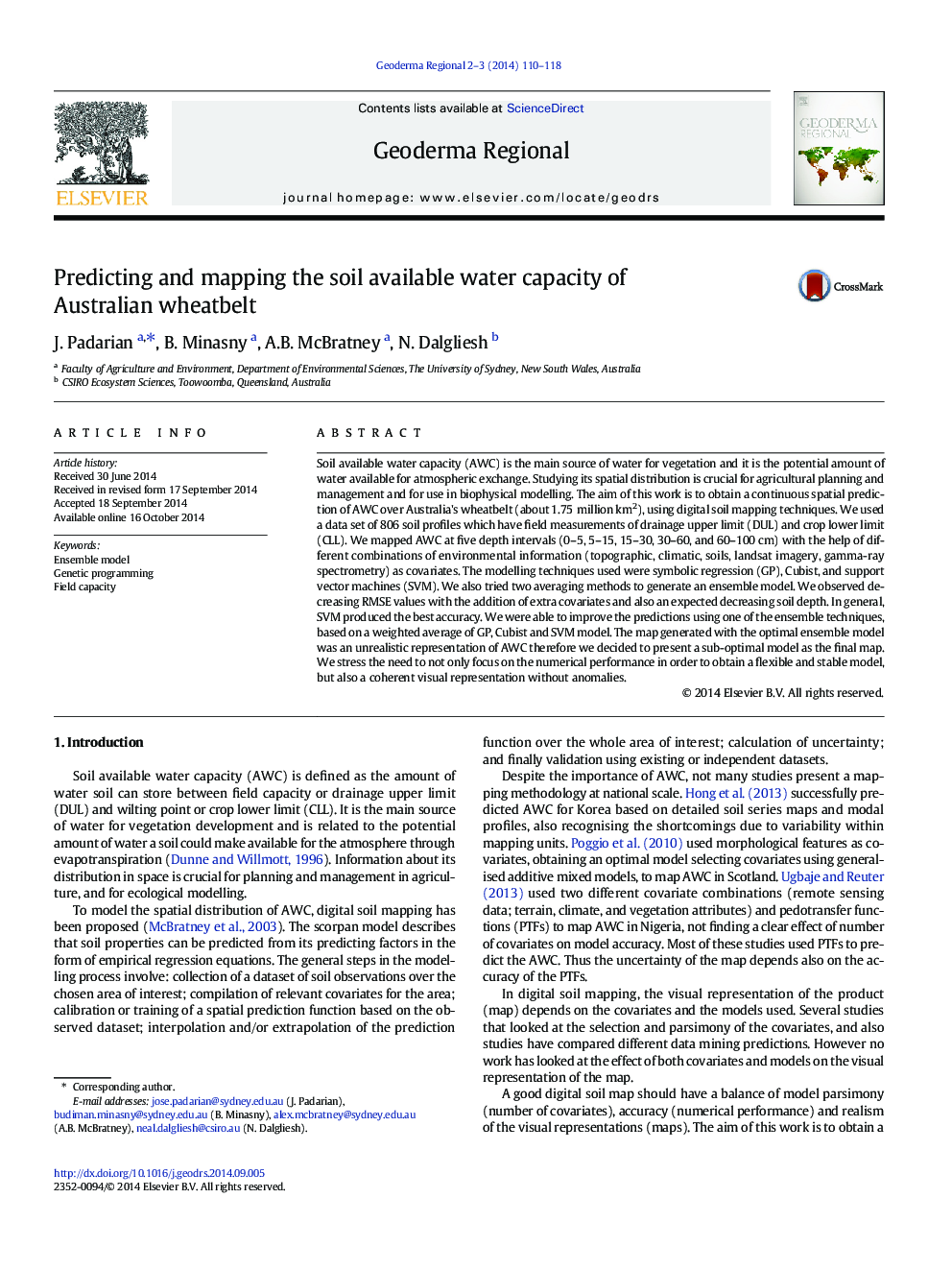| Article ID | Journal | Published Year | Pages | File Type |
|---|---|---|---|---|
| 4480817 | Geoderma Regional | 2014 | 9 Pages |
Soil available water capacity (AWC) is the main source of water for vegetation and it is the potential amount of water available for atmospheric exchange. Studying its spatial distribution is crucial for agricultural planning and management and for use in biophysical modelling. The aim of this work is to obtain a continuous spatial prediction of AWC over Australia's wheatbelt (about 1.75 million km2), using digital soil mapping techniques. We used a data set of 806 soil profiles which have field measurements of drainage upper limit (DUL) and crop lower limit (CLL). We mapped AWC at five depth intervals (0–5, 5–15, 15–30, 30–60, and 60–100 cm) with the help of different combinations of environmental information (topographic, climatic, soils, landsat imagery, gamma-ray spectrometry) as covariates. The modelling techniques used were symbolic regression (GP), Cubist, and support vector machines (SVM). We also tried two averaging methods to generate an ensemble model. We observed decreasing RMSE values with the addition of extra covariates and also an expected decreasing soil depth. In general, SVM produced the best accuracy. We were able to improve the predictions using one of the ensemble techniques, based on a weighted average of GP, Cubist and SVM model. The map generated with the optimal ensemble model was an unrealistic representation of AWC therefore we decided to present a sub-optimal model as the final map. We stress the need to not only focus on the numerical performance in order to obtain a flexible and stable model, but also a coherent visual representation without anomalies.
